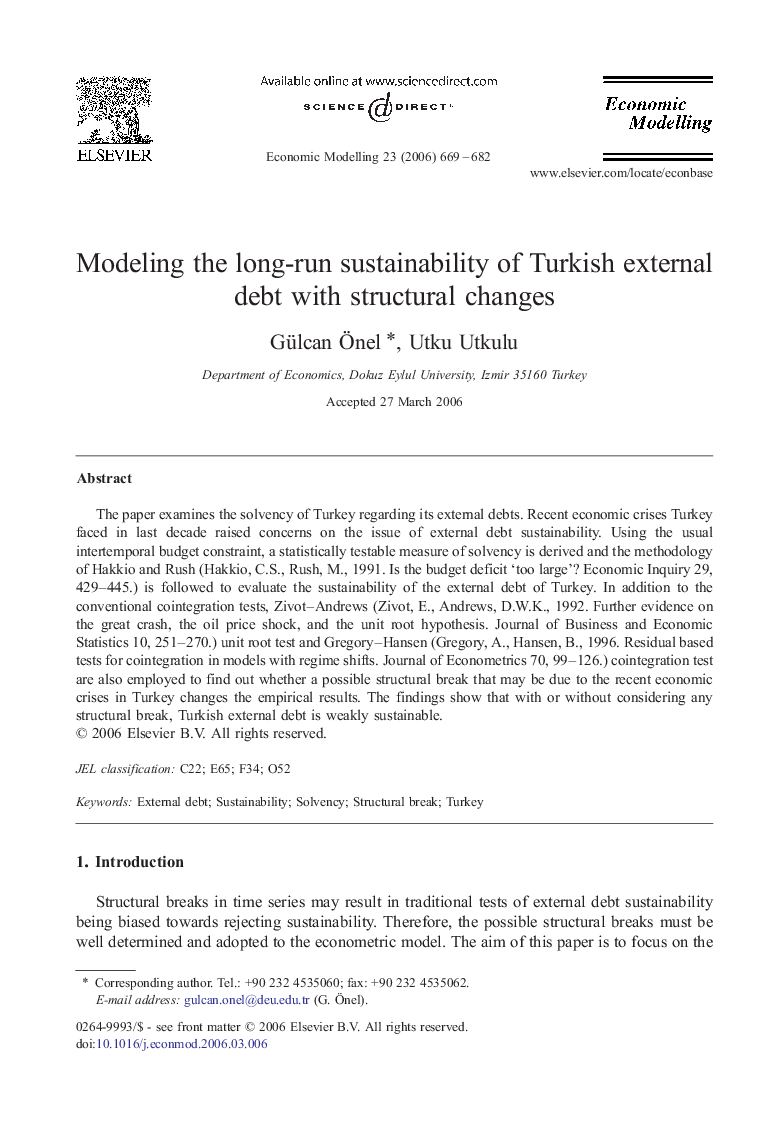| Article ID | Journal | Published Year | Pages | File Type |
|---|---|---|---|---|
| 5056047 | Economic Modelling | 2006 | 14 Pages |
The paper examines the solvency of Turkey regarding its external debts. Recent economic crises Turkey faced in last decade raised concerns on the issue of external debt sustainability. Using the usual intertemporal budget constraint, a statistically testable measure of solvency is derived and the methodology of Hakkio and Rush (Hakkio, C.S., Rush, M., 1991. Is the budget deficit 'too large'? Economic Inquiry 29, 429-445.) is followed to evaluate the sustainability of the external debt of Turkey. In addition to the conventional cointegration tests, Zivot-Andrews (Zivot, E., Andrews, D.W.K., 1992. Further evidence on the great crash, the oil price shock, and the unit root hypothesis. Journal of Business and Economic Statistics 10, 251-270.) unit root test and Gregory-Hansen (Gregory, A., Hansen, B., 1996. Residual based tests for cointegration in models with regime shifts. Journal of Econometrics 70, 99-126.) cointegration test are also employed to find out whether a possible structural break that may be due to the recent economic crises in Turkey changes the empirical results. The findings show that with or without considering any structural break, Turkish external debt is weakly sustainable.
